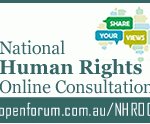Teens and acceptable behaviour online
What was considered private personal information a decade ago is being redefined in the digital age. Joanne Jacobs from 1000heads advises parents to use a common sense approach in dealing with the online behaviour of their teenage children.
The harsh reality of teens and online behaviour is that what might have been considered as inappropriate behaviour among teens a decade ago, is now so common that it has become a ‘new norm’. Risk-taking behaviours in social networking site engagements are a growing trend, and teens are continuing to negotiate what can be deemed acceptable and unacceptable, often as a process of trial and error, but even more frequently in response to similar behaviours among their peers.
While this process of negotiation may seem challenging for parents, educators and care-givers, it is important to note that the act of challenging existing standards for acceptable behaviour is not only a practice of every generation, but it is a key aspect of cultural identification – from fashions and music to language and interactions, social behaviours are continuously being redefined to reflect cultural contexts. Problems for carers primarily arise where behaviours are not just radically open and (perhaps) embarrassing, but where the behaviours fall in to the category of illegal activities – harassment and cyber-bullying, theft and trespassing, and access to (locally) banned content. Carers may find themselves liable for the actions of teens under their supervision if such activities are discovered and charges are pursued.
But of course this isn’t new. Teens have been bullying one another, illegally accessing pornographic and other banned materials and committing theft for generations. And for every generation, the legal guardians have always had to accept some responsibility for the behaviours of minors. The only real difference between previous and current social situations is that:
- The technologies used for both acceptable and unacceptable behaviours are exactly the same, and thus unacceptable behaviours are harder to ‘see’
- The opportunity to connect with others and with data sources is significantly higher in technologically-mediated social channels online than in reality, thus the volume of opportunities to pursue unacceptable behaviours online is significantly higher than offline.
But volume of connections and availability of tools are not going to reduce over time. And no amount of banning mobile devices in classrooms or in the household is going to control the propensity of teens to test out unacceptable behaviours on social networks. Indeed, unfortunately for carers, there’s absolutely no sure fire way to prevent illegal activities among teens. Anyone who tells you there are ways to prevent it is either exaggerating the truth or flat out lying. You can’t prevent it, you won’t prevent it. Get over it.
In fact it is absurdly easy for teens to hide their behaviours from carers. Anonymous communication systems like Tor or even simplistic systems like using an incognito browser window will prevent carers from being able to track online behaviours by looking at a browser history or checking IP address engagements. Only very immature users of technology would ever choose to pursue unacceptable behaviours in a trackable manner. And teens are some of the biggest growing users of anonymising systems. No matter what the Government may tell you about state censorship of unacceptable content, no statutory systems either protect young people from accessing unacceptable content, nor do they prevent teens from engaging in unacceptable behaviours.
What carers can do to mitigate unacceptable behaviours is precisely what teens are doing for all social behaviours among themselves; learning through open discussions and sharing of information on what can be considered acceptable and unacceptable behaviour. Carers should be exploring and clearly articulating the scope of what is acceptable and unacceptable rather than avoiding the subject, or blanket banning devices and/or activities which, although perhaps unadvisable, are not technically illegal. Further, these discussions should be taking place well before children hit their teen years. Bullying, for instance, can be discussed as an unacceptable behaviour both in the playground and on social channels among even the lowest levels of primary school aged children.
It’s an obvious point, but carers need to take a common sense approach to social behaviours among teens. What was considered private personal information a decade ago is being redefined. We may find it uncomfortable, but coping systems will evolve to accommodate this radical transparency. What’s important is ensuring that teens are adequately informed about the implications of their actions in social channels and that they have control of information held about them. And for carers, what’s important is to implement green light, rather than red light regulation, in order to enable young people to deal with a changing social culture.
Joanne Jacobs is the COO of 1000heads, a word of mouth marketing firm focusing on facilitating conversations as a means of improving business. She has returned to Australia after four years in London where she was a consultant in social networking technologies and was a professional speaker, business coach, trainer and strategist for digital marketing practices. Joanne has a long history in academia, lecturing extensively in strategic use of information technology and strategic internet marketing. She was co-editor of the book Uses of Blogs.













